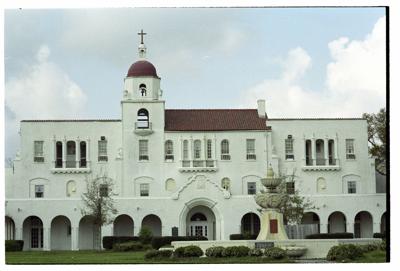The question of whether organized religion has a good or bad influence on the secular world has long been especially perplexing in New Orleans.
The task of exposing the evil that gnaws away at the heart of the Catholic Church once again rests with one of its most devout members.
New Orleans journalist and author Jason Berry, who led the way in documenting the pedophilia scandals that brought shame and bankruptcy to the church throughout the country — most emphatically including the local archdiocese — has returned to the fray.
Years after his first assault on the hypocrisy of a church that provided a haven, and clerical robes, for child rapists, Berry keeps the explosive revelations coming. His latest effort is a three-part series in The Guardian that tells the heartbreaking story of life in the residential homes the church maintained on the West Bank for orphaned and otherwise bereft youngsters.
Those homes — one of them known with ghoulish irony as Hope Haven — were indistinguishable, at least to the inmates, from prisons, complete with fugitive kids returned to captivity by NOPD. Once back in the custody of the Mother Church, a kid who had lammed it out of there would be confronted by a masked priest.
The idea was to conceal the identity of the priest who was about to rape some poor youngster, but it made the ghastly scene all the more reminiscent of a medieval torture chamber. Given the faux Spanish colonial style of the buildings that housed these horrors, that was by no means inappropriate.
Raping minors is a despicable crime regardless of the perpetrator's station in life, but for a man of the cloth to betray his trust and rob a child of his innocence is surely to invite damnation.
It has long been known that the archdiocese had a standard response whenever a child molester was discovered in the ranks of its priesthood. The standard response, according to the law of the land, should have been to alert the cops and ensure that perps got their comeuppance, but the law of the land is not always the ultimate authority in the eyes of the godfearing.
Instead, the archdiocese dummied up about the criminals on its payroll and afforded them protection by shunting them away from the scene of their crimes and foisting them onto some unsuspecting parish several miles away.
The church cannot be said to have gotten away with this grubby trick, because the press exposed its modus operandi years ago. But we may have underestimated its ability to find new young targets.
We may have always known that orphans are ripe for exploitation, but it took organizational dedication to turn charitable institutions into a steady source of victims.
As for the overriding question of whether organized religion is good or bad for society at large, the only sensible answer is that you pays your money and you takes your choice. For every grateful soul with the key to eternal bliss, there will be an alumnus of some institution such as Hope Haven.
On balance, however, New Orleans is still a very Catholic town. If you took a poll on the influence of the church on secular society, a majority would probably give it a thumbs up.
Email James Gill at gill504nola@gmail.com.

